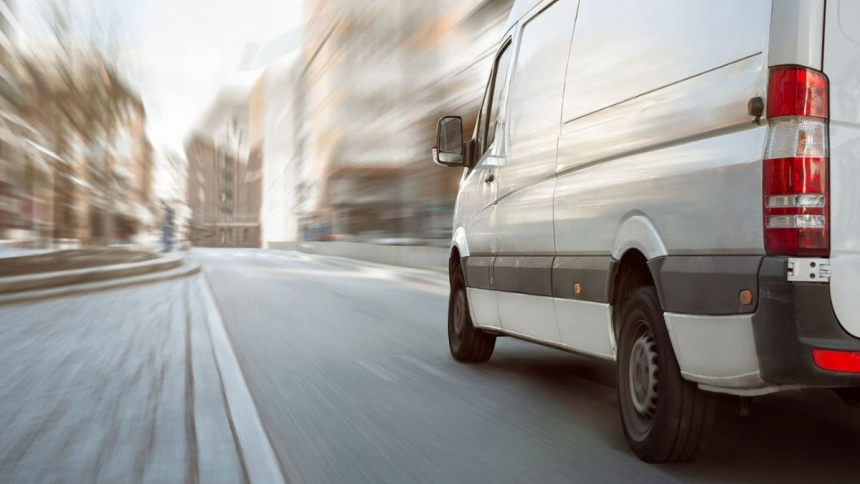In today’s fast-paced business world, getting the right van can make all the difference to your operations. Whether you’re a tradesperson hauling tools, a delivery service zipping around town, or a small business needing reliable transport, choosing how to acquire that van is a big decision. Should you buy it outright, finance it over time, or opt for leasing? Each option has its perks and pitfalls, influenced by your cash flow, tax situation, and long-term plans. This article breaks it down in simple terms, helping you weigh up the choices for your UK-based business. We’ll look at the pros and cons, tax implications, and key factors to consider, all based on current trends as of 2025.
Buying a Van Outright: The Ownership Route.
If your business has a healthy bank balance, buying a van outright might seem straightforward. You hand over the cash, and the van is yours – no strings attached. This gives you full control: you can modify it as you like, sell it whenever you want, and there’s no mileage limits or contract restrictions.
One major advantage is avoiding interest payments. With van prices averaging £20,000 to £40,000 for new models in 2025, not borrowing means no extra costs eating into profits. Plus, ownership builds equity; as you pay off any associated costs, the van becomes an asset on your balance sheet. If you sell it later, any profit is yours.
But there are downsides. The big one is the upfront cost, which can drain your cash reserves and limit funds for other investments like stock or marketing. Vans depreciate quickly – losing 20-30% of value in the first year – so your asset shrinks over time. Maintenance and repairs are all on you, and if business slows, you’re stuck with the van and its costs. For startups or cash-strapped firms, this option might not be feasible without dipping into personal savings.
Financing a Van: Spreading the Cost.
If buying outright is too steep, financing lets you spread payments while aiming for ownership. Common options include hire purchase (HP), where you pay a deposit (10-30%) and monthly instalments, or a business loan to cover the full cost.
HP is popular because the van is yours at the end, after the final payment. Monthly costs are fixed, aiding budgeting, and you can often include extras like warranties. Interest rates in 2025 hover around 5-10%, depending on your credit score, making it cheaper than some personal loans. Like buying, you get tax relief via capital allowances, and VAT is reclaimable upfront or spread out.
Pros include preserving cash flow – you might only need £2,000-£5,000 down for a £25,000 van. It’s flexible for used vans too, and building equity means you can trade up later. For growing businesses, this balances affordability with asset building.
Cons? Interest adds to the total cost – a £25,000 van at 7% over five years might cost £30,000 overall. Credit checks are strict; bad credit van finance could mean higher rates or rejection. If you default, the lender can repossess the van. Also, like owning, you’re responsible for depreciation and upkeep, and early settlement fees might apply if you pay off early.
Leasing a Van: The Flexible Alternative.
Leasing has boomed in the UK, with over 60% of new vans acquired this way in recent years. There are two main types: contract hire (pure rental) and finance lease (with a potential buy option at the end).
With contract hire, you pay an initial deposit (often 3-12 months’ payments) and fixed monthly fees for 2-5 years. At the end, hand back the van – no fuss with selling. Maintenance packages are common, covering servicing and tyres, which slashes unexpected bills. Monthly costs are lower than financing; for a £25,000 van, you might pay £300-£500 a month versus £500+ on HP.
Tax benefits shine here. Lease payments are fully deductible as business expenses, reducing your taxable profits. VAT-registered firms reclaim 50-100% of VAT on payments (full for commercial use). No capital allowances needed since you don’t own it, and for electric vans, enhanced deductions apply. It’s ideal for cash flow, as upfront costs are minimal, and you get the latest models with better fuel efficiency and tech.
Drawbacks include no ownership – you can’t sell or equity-build. Mileage caps (10,000-30,000 miles/year) mean excess charges if overrun, and condition penalties at handover. Total cost over time might exceed buying, especially for long-term use. Customisation is limited, as the van must return in good nick.
Comparing Options: What Suits Your Business?
To decide, consider your situation. Cash-rich? Buy outright for lowest long-term costs and ownership perks. Need to spread payments but want to own? Finance via HP. Prefer hassle-free, tax-efficient running? Lease.
What to consider:
- Cash Flow: Leasing preserves capital; buying drains it.
- Usage: High mileage? Buying avoids penalties. Low? Leasing’s fine.
- Tax Position: All offer relief, but leasing deducts payments ongoing, while buying gives upfront allowances. Consult an accountant – sole traders vs limited companies differ.
- Van Type: Electric? Enhanced incentives across options.
- Business Stage: Startups lean to leasing; established firms buy.
Lynn Martelli is an editor at Readability. She received her MFA in Creative Writing from Antioch University and has worked as an editor for over 10 years. Lynn has edited a wide variety of books, including fiction, non-fiction, memoirs, and more. In her free time, Lynn enjoys reading, writing, and spending time with her family and friends.















